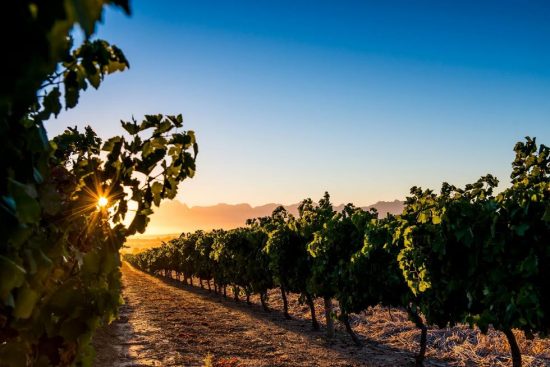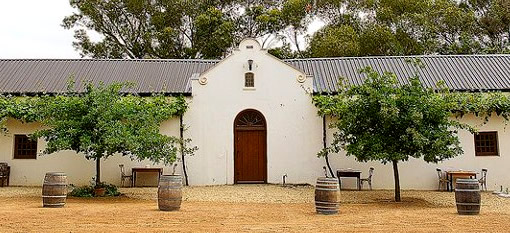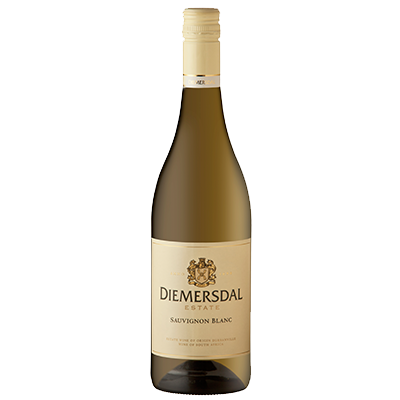With the Western Cape experiencing its second dry winter in a row during 2016, initial predictions as to the volumes, quality and health of the 2017 Vintage were not brimming with optimism. Especially at Diemersdal where one of the features is unirrigated, dryland farming which is seen as a major contributor to the quality of the estate’s grapes and elegant, refined structure of the wines.
Last year’s winter arrived late in most regions, but was cold enough to break plant dormancy. Although rainfall was higher than 2015, it was still well below average with dam and soil water levels remaining under pressure. Spring arrived on time and warm weather in August contributed to somewhat earlier – but even – bud burst. October and November were characterised by cool nights and warm days, ensuring timeous and healthy flowering and berry-set.
Last year’s crop was significantly lower due to heat and the protracted winter conditions, and a few months ago forecasts for 2017 were looking similar as the summer heat set-in around November.
But nature works in ways that can only be described as wonderfully unexpected.
Firstly, just around Christmas last year, Diemersdal experienced some 25mm rainfall in a short period, which was literally like manna from heaven. The soils were wet and the vineyards freshened up. The plants’ sigh of relief at the cool, moist soils could literally be heard around the farm.
And then when harvest on Diemersdal began in January, the temperatures turned from hot to mild and comfortable, with surprisingly low night-time temperatures of between 14 and 16 degrees Celsius. This surprising change to the predictions of heat-waves lead to a significant increase in grape volumes, superb health of fruit and terrific chemical analyses with low pH levels, fresh acidity and brilliant flavour profiles.
With the lack of overall moisture, vines and fruit were extremely healthy as the dry conditions keep pests and diseases at bay.
The white wines – Sauvignon Blanc, Chardonnay and Grüner Veltliner, as well as the early ripening Pinotage – are showing signs of 2017 being one of the best Cape vintages in a very long time. Diemersdal Sauvignon Blanc 2017, already on the market, is showing the desired tropical notes the estate aspires to, brimming with quince, gooseberry and melon. This characteristic tropical flavour profile is the result of Diemersdal’s practice of opening-up the vines’ canopies in the growing season, allowing exposure to the sun. And judging by the quality of this early release Sauvignon Blanc, prospects for the rest of the range’s quality appear excellent and we are looking forward to the release of these wines in June.
On the red wine side: with the cool harvest season, later-ripening varieties, such as Cabernet, Merlot and Malbec, were given longer hang-time before picking as sugar levels rose slowly. The result was lighter bunches and smaller berries with immense flavour concentration, making the red wines this year brooding, complex and extremely refined.
While Diemersdal is looking forward to rolling out the quality 2017 vintage, at the time of writing this report conditions are still disturbingly dry in the Western Cape, and the possibility of another dry winter is grave cause for concern.






